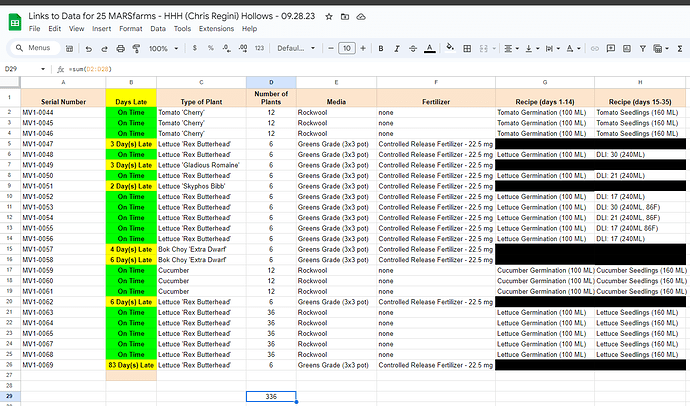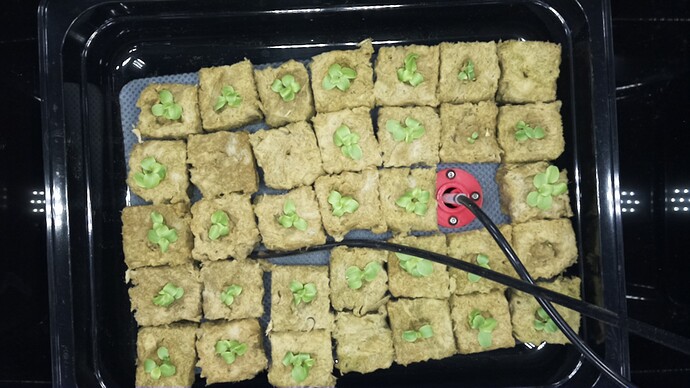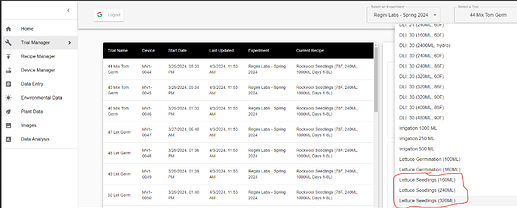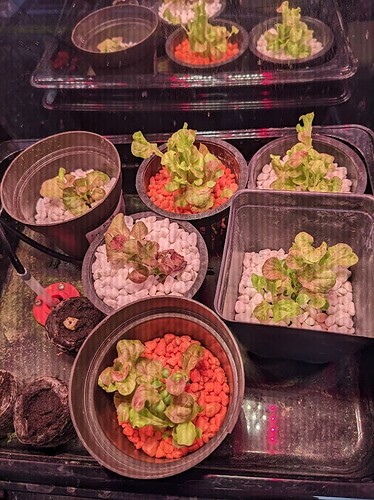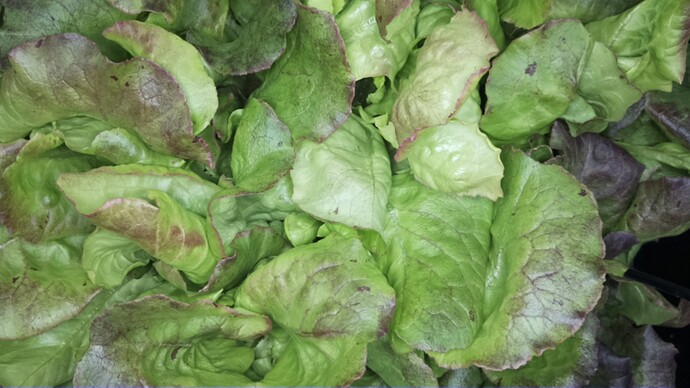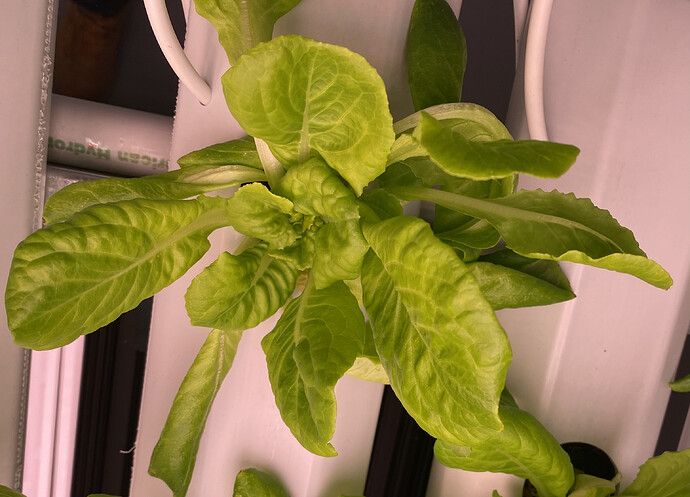Irrigation System
I honestly just put together that we were using it as a flood/drain system myself - so no worries there.
I would try to manage this just by letting the exterior of the rockwool dry out occasionally. It’s really your choice here and I honestly don’t know if there’s a conclusive ‘right’ way to do this. The trade-off you’re going to make is that if you let the tray dry out completely then all of the roots will be limited to growing within the rockwool. It could be beneficial to have some longer roots already growing before you transplant into larger hydroponic systems though - so there could be a benefit to having it stay flooded continuously so long as the algae isn’t too bad.
Those nice hanging roots which make it super easy to transplant this into a larger system.
Regarding ‘foiling’ the cubes - it’s not a bad idea. When I transplant rockwool into a net cup for a shallow water culture or deep water culture system, I like to use aquarium gravel (colorful, pre-washed, etc.) to cover the surface of the rockwool for exactly this reason.
If I don’t use aquarium gravel, the rockwool surface looks like this after nutrients of 1000 ppm for two weeks.
Same idea, using hydroton (expanded clay, which is super water absorbent and porous) and no rockwool even
If you wanted to just leave the rockwool in the MV1s and just cover it with hydroton - that’s exactly what I did here for one tomato plant that I grew for about 3 months.

This would be the first one in the field - but it’s possible. I’ll ask @Drew to follow-up about replacing it.
It should load for you - the navigation though on the charts is not intuitive yet. You’d need to click:
- Click on ‘Data Analysis’ tab from the navigation menu (make sure you’re in the ‘Regini Lab - Spring 2024 Experiment’.
- Select the trial you want to view pump data for from the top right drop-down menu.
- Click the ‘View Single Trial’ button
- Click the ‘Actuator Pump’ button and then the chart will be displayed below. You may then select different trials again from the top right down-down menu to check on different devices.
Absolutely, an ‘add 80ML’ button next to ‘FLASH LED’ is definitely in our pipeline.
Recipes for cucumbers and tomatoes
I added recipes for cucumber seedlings with 90F temperature and variable irrigation from 160-480ML. Let me know if you want me to also add all the way up to 1000ML or one at like 0 ML if you wanted to dry them out by switching to that for a day manually.
I did the same for tomatoes, with the only difference being that those are set to 85F temperature.
There were already these variable irrigation recipes created for lettuce at 78F, so I just left those the same.
Cucumbers
Tomatoes
Lettuce
Nutrients
I would recommend that you start by mixing in about 500 PPM of nutrients for your tomatoes and cucumbers. Perhaps a little less (300 PPM) for your lettuce seedlings. That should be plenty over the next week to get them growing fast but not too much to potentially burn/damage them.
To be clear, I’m saying that if you were to take tap water and measure the ‘Electrical Conductivity’ using a ‘Total Dissolved Solids’ meter (like $10 on Amazon) and it came out to be 200 ‘Parts Per Million’ (abbreviated PPM) then you would add nutrients until it increases to be 700 PPM - an increase of 500.
I’m going to recommend you keep the feed rate pretty low though for now - otherwise these plants are gonna get massive quickly. What you want though is to prevent any yellowing or deficiencies.




